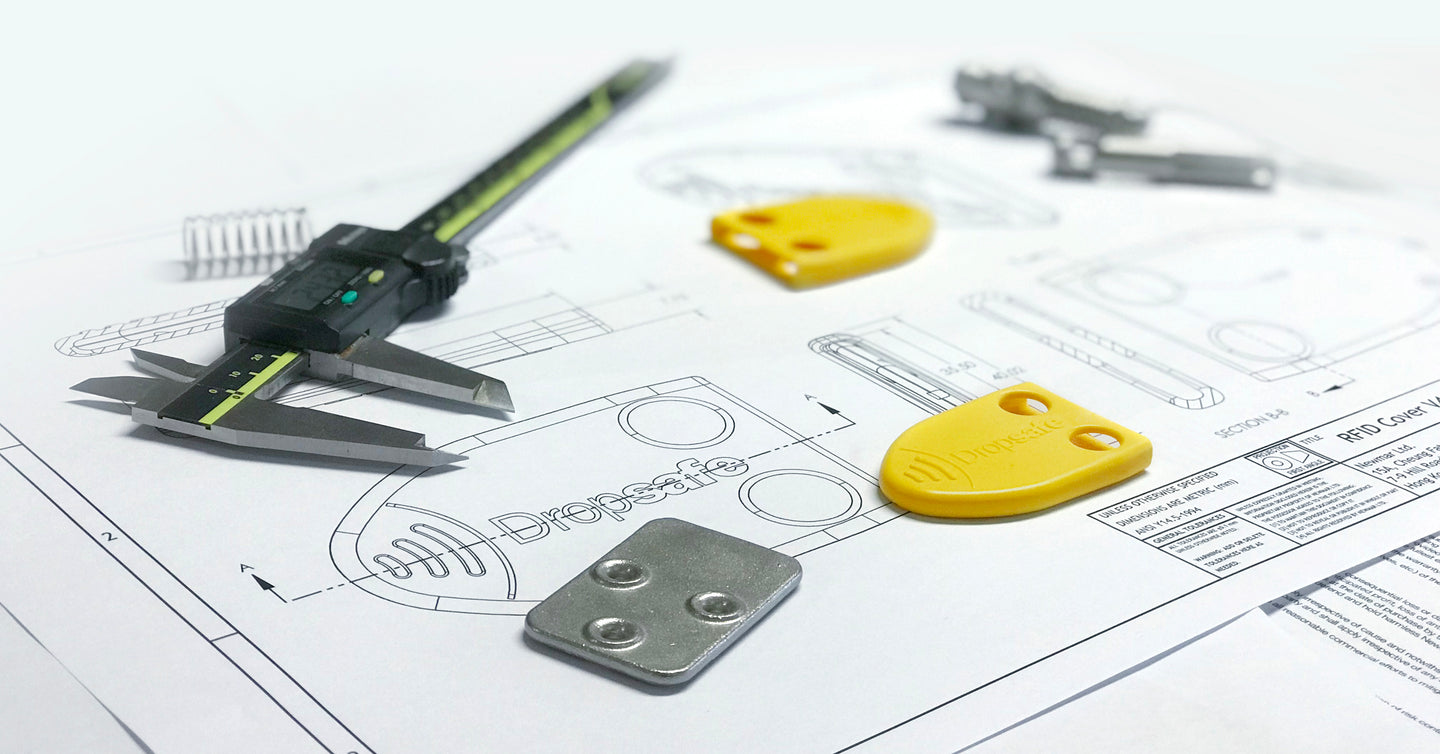In today’s world, digital identification is everywhere. From QR codes in warehouses to contactless payments, quickly verifying the identity of people and objects makes daily processes more streamlined and convenient.
On oil and gas rigs, the same reasoning drives inspection teams and operators to track valuable assets using Radio Frequency Identification (RFID) chips – it saves time and makes the job of inspectors easier.
In the hazardous environment of an industrial facility, adding digital tracking capabilities to widely used HSE solutions can also increase safety. Human error is significantly reduced, and operators gain peace of mind that inspections have been thorough.
As part of a wider focus to create extra layers of security for the new Dropsafe Net, Dropsafe has added improved tracking and traceability to the product by adding an RFID chip to the choke plate. This simple step will enable straightforward integration with the inspection and inventory software already being used by teams on site.
This article draws on insights from Justin Shum, a Senior Project Manager at Dropsafe, and Adam Gibson, Vice President at OES Asset Integrity Management, to explore why digital integration is increasingly a key part of health and safety best practice, and the exciting possibilities opened up by wider adoption of tracking technology.
What is an RFID chip?
RFID (Radio Frequency Identification), enables compatible devices in proximity to read data. Unlike barcodes or QR codes, a reader does not need direct line of sight to the tag to be able to read and transmit data – they only need to be in close proximity. RFID tags can be read with any compatible reader or smartphone.
The tags on the Dropsafe Net are passively powered, meaning they draw all the power required from the reader device and are therefore not constrained by battery life. The tags are not pre-encoded with any data and only contain a Unique ID (UID). They are re-writable, however, and capable of storing up to 1024 bits of data.
Justin explains: “Valuable or critical equipment and components may be tracked by stakeholders using RFID technology, making inventory tasks more reliable and less time consuming. In oil and gas (O&G), RFID tags are typically added to critical assets such as drill pipes, pumps, and instrumentation to track them during transport and installation.”
“As the industry approach to HSE equipment shifts towards long-term ownership –looking at equipment as an asset instead of a consumable – we increasingly found that asset owners and inspection companies are looking for in-built digital integration in commonly used solutions such as safety securing nets.”
The benefits of digital tracking technologies in O&G
Improving the digital integration of HSE assets has three key benefits for facility owners: increasing track and traceability, reducing the scope for human error, and lessening admin during inspections and maintenance work.
Adding tracking and traceability
An RFID tag means that a HSE solution can be easily tracked from the factory to the facility if needed, with installation and inspection data stored in a central asset management system.
Crucially, this provides authentication for approved products. Any counterfeit HSE solutions on the market may not provide an appropriate level of protection for harsh offshore environments. Adding additional verification helps mitigate this risk.
Reducing human error
Digital integration allows monitoring of the solution during installations or inspections and easy assimilation into data-based safety management systems. For asset owners, this provides validation that a solution has been inspected according to best practice procedures. The RFID tags used on Dropsafe’s new Net also require the reader device to be held near to the tag, ensuring that visual inspections take place.
Adam Gibson elaborates: “Fundamentally, this is about ensuring consistent standards at every level. With various approaches to HSE training across global markets, even competent professionals may perform an inspection differently. Using a data-based asset management system ensures standardisation, while delivering peace of mind for facility owners that inspections have been undertaken in line with best practice.”
Saving time and reducing paperwork
Traditional inspections require significant volumes of paperwork, which can be lost or forgotten about – as well as consuming valuable time for personnel. With the right software, scanning an RFID tag opens a quick link to an inventory page, allowing inspectors to update the safety management system in real time with details and photographic evidence of installations and inspections.
Additionally, nets are often installed in places where finding a barcode or serial number is challenging. This could even cause additional HSE risks for personnel if ladders are used to access the serial number.
“RFID tags on secondary securing equipment should link to a database showing the date the solution was installed, its batch number, a photo of installation and subsequent inspections, and the location of the facility. This ensures that all information regarding the product is easily accessible and resilient to any personnel changes.” says Adam.
What does the future hold for digital asset management?
In the years ahead, as the mainstream of HSE solutions catch up with early adopters, digital asset management will become increasingly sophisticated as the functionality of safety management software platforms improves.
From experience working with the most advanced safety platforms available today, Adam anticipates a new revolution in digital HSE tracking:
“The key changes will be around automating inspection processes to ensure that the insights of a trained inspection organisation are built into the software. At OES, our procedures are already robust enough to ensure inspection deadlines are accounted for – but opening up the scope for automatic reminders will make inspections more efficient than ever, delivering added value for our clients.”
Interested in finding out more about Dropsafe Net’s added features? Visit the new product page at this link.
